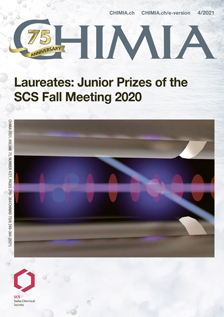Esterification Product Protection Strategies for Direct and Selective Methane Conversion
DOI:
https://doi.org/10.2533/chimia.2021.305PMID:
33902800Keywords:
Catalysis, Methanol, Methyl ester, Partial oxidation of methane, Product protectionAbstract
A scale-flexible process for the direct and selective oxidation of methane to primary oxygenates is of great interest, however, a commercially feasible approach has yet to be realized due to a number of challenges. Low product yields imposed by a well-established selectivity-conversion limit are particularly burdensome for direct methane-to-methanol chemistry. One strategy that has emerged to break out of this limit is the in situ esterification of produced methanol to the more oxidation-resistant methyl ester. However, these methaneto-methyl-ester approaches still elude commercialization despite their unprecedented high yields. Herein, we outline some of the key barriers that hinder the commercial prospects of this otherwise promising route for highyield direct catalytic methane conversion, including extremely corrosive reagents, homogeneous catalysts, and inviable oxidants. We then highlight directions to address these challenges while maintaining the characteristic high performance of these systems. These discussions support the efficacy of product protection strategies for the direct, selective oxidation of methane and encourage future work in developing creative solutions to merge this promising chemistry with more practical industrial requirements.Downloads
Published
2021-04-28
Issue
Section
Scientific Articles
License
Copyright (c) 2021 Andrea N. Blankenship, Manoj Ravi, Jeroen A. van Bokhoven

This work is licensed under a Creative Commons Attribution 4.0 International License.
How to Cite
[1]
A. N. Blankenship, M. Ravi, J. A. van Bokhoven, Chimia 2021, 75, 305, DOI: 10.2533/chimia.2021.305.







